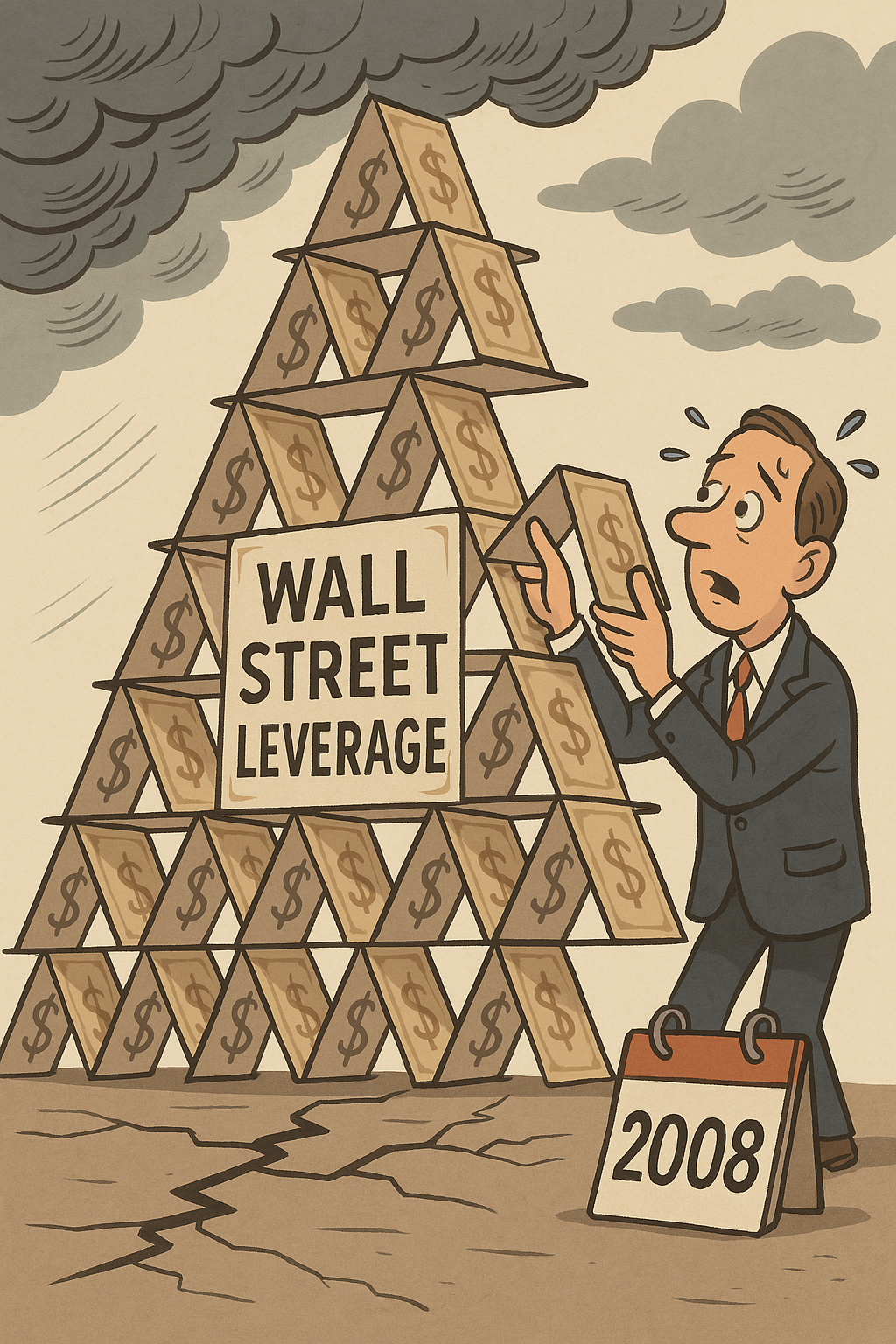
How Borrowing Too Much Brought Wall Street to Its Knees
What Is Leverage?
Let’s say you have $10.
But you borrow $90 more so you can make a $100 investment.
That’s leverage—using borrowed money to try to make more money.
If that $100 investment goes up 10%, you make a great profit.
But if it drops 10%? You lose everything… and still owe money.
🏗️ It’s like building taller and taller using stilts—looks good, but easy to topple.
What Did Wall Street Do?
In the early 2000s, banks and investment firms like Lehman Brothers used extreme leverage.
- They were borrowing $30 or more for every $1 of their own money.
- Why? To buy risky mortgage-backed securities and other complex financial products.
- More borrowed money = bigger bets = bigger rewards… until the music stops.
They built a huge tower of debt on a tiny base of real money.
What Went Wrong in 2008?
When homeowners started defaulting on mortgages:
- Those “safe” investments tanked.
- Even small losses caused massive damage—because banks were over-leveraged.
- No one wanted to lend anymore.
- Big firms like Lehman Brothers collapsed because they couldn’t pay back what they owed.
The entire financial system started to fall like a house of cards.
Why Leverage is So Risky
- It amplifies gains, but also amplifies losses.
- A small market drop can wipe out leveraged institutions completely.
- When multiple banks are leveraged and panic hits, everyone starts selling, causing a crash.
Leverage isn’t just a Wall Street thing. It’s everywhere:
- Credit cards
- Student loans
- Margin trading apps
- Even businesses use it to grow faster
Understanding leverage = understanding risk.
If you borrow too much in any part of life, you’re building your own house of cards.
“Leverage is like nitro: powerful, but dangerous if mishandled.”
In 2008, it blew up the global economy.
Now that you know what it looks like—you’re less likely to fall for it.

